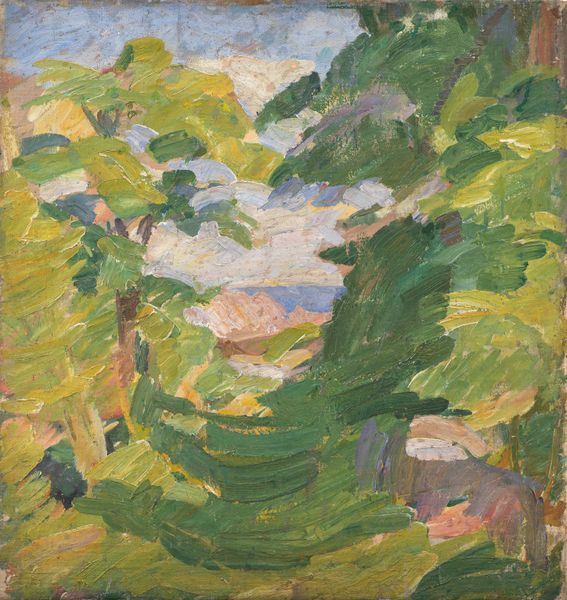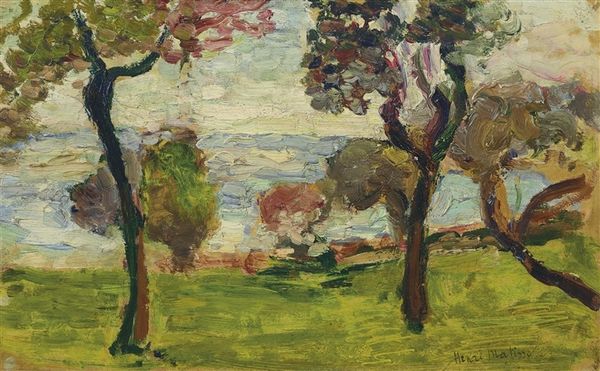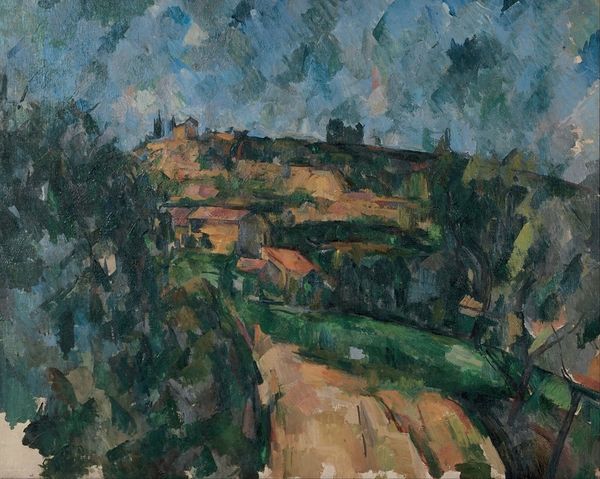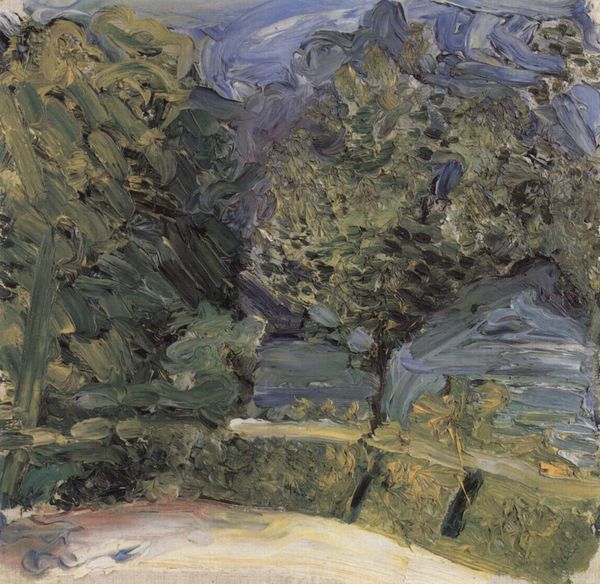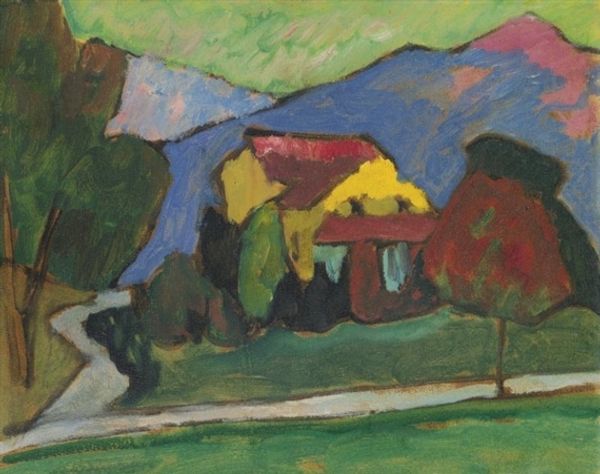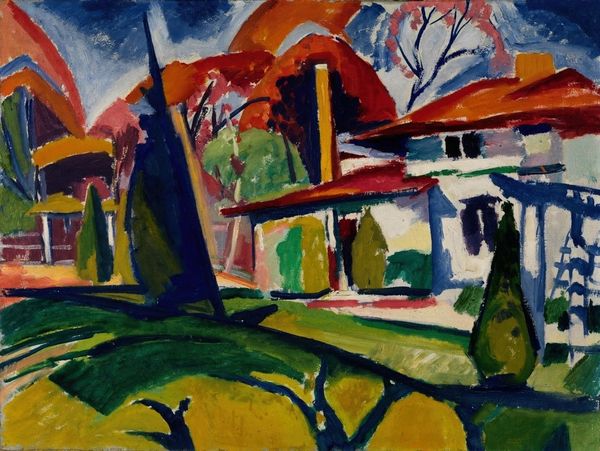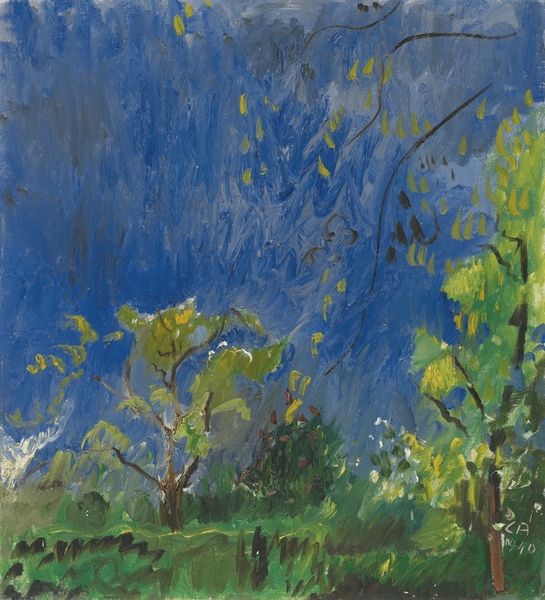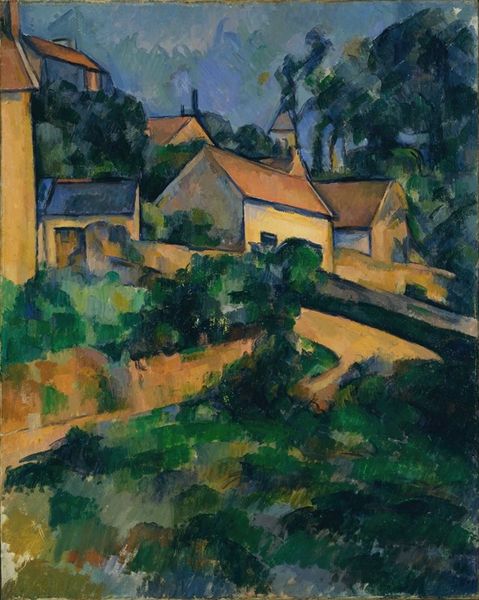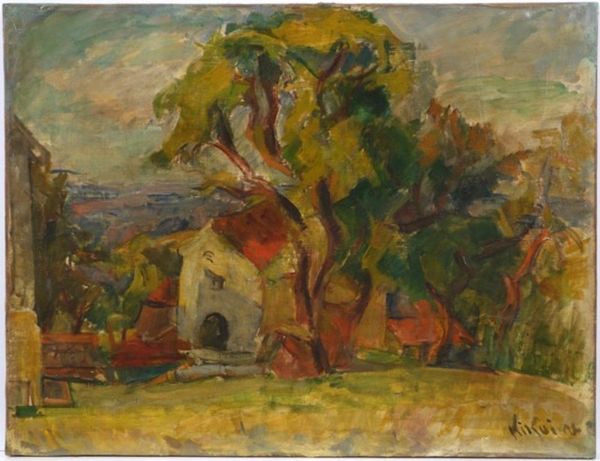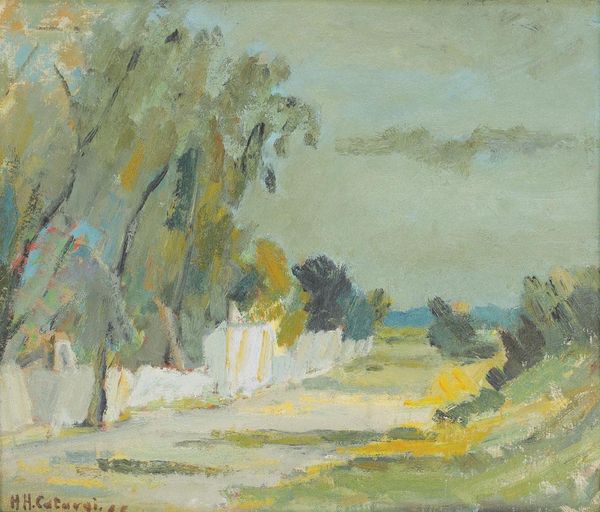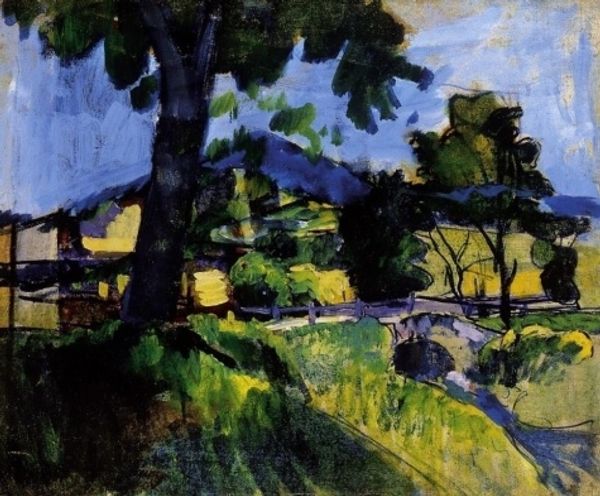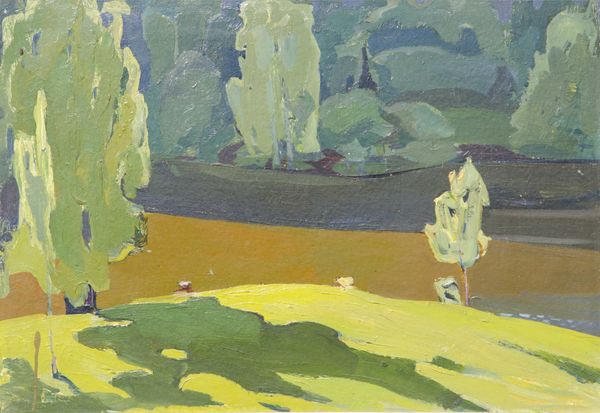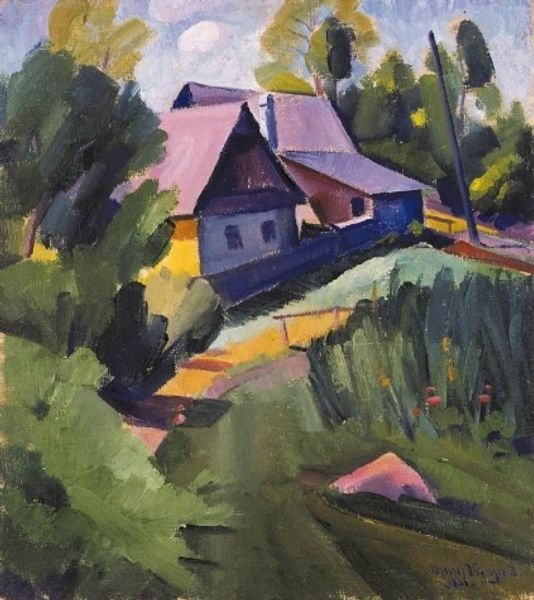
Copyright: Public domain US
Editor: We're looking at André Derain’s “Poplars,” painted around 1900 using oil paints. The colors are so striking! What's your interpretation of it? Curator: Derain's "Poplars," made during his Fauvist period, isn't simply a landscape. Think about what Europe was facing then: urbanization, industrial growth. Artists were reckoning with how modern life transformed the natural world and its impact on everyday experiences. Do you think the unnatural color palette is just for aesthetics, or is Derain perhaps using color to evoke a specific feeling about that changing landscape? Editor: That makes me reconsider it. It’s as if the intensity of the colors reflects some tension between nature and industrialization? Curator: Precisely! Consider, too, the role of perspective in the landscape tradition. Does Derain reinforce or subvert those traditions, and what might he be saying by doing so? The vibrant, almost violent, brushstrokes create a sense of unease, challenging the idea of the pastoral as a place of simple, unburdened peace. Editor: It’s interesting you point out that "unease" - now I see the almost chaotic nature of the paint strokes! How different from other landscapes of that time… Curator: Yes! Artists began using distortion and abstraction to express what the modern world *felt* like, and this shift in art reflected a larger social and political reckoning with what it meant to be modern. Editor: Thank you for offering this different point of view! It really opens my mind. Curator: Absolutely. Looking at art through a lens of social change and questioning gives these landscapes even more depth and helps connect historical movements to our present day concerns.
Comments
No comments
Be the first to comment and join the conversation on the ultimate creative platform.
